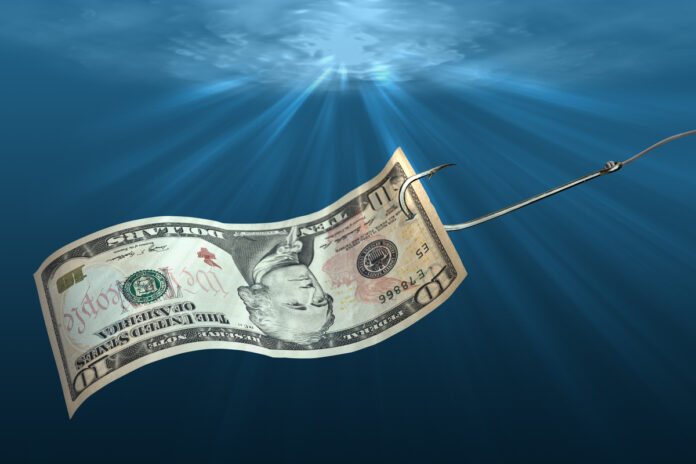I have worked in the advertising and marketing industry for longer than most. I’ve seen the rise of the internet, the demise of network television, the emergence of social media, and the decay of metropolitan newspapers. Like most industries, the advertising and marketing sector has seen its share of changes in the past quarter century.
Along the way, I’ve picked up some gemstones of wisdom, often in the unlikeliest of places. One man I worked with bootstrapped his way and built a thriving business, and as he gathered the accoutrements of success around him, including the boats, jets, and Bentleys, he also shared his insight on “making it big in America.”
His advice was to offer something at what appeared to be an outrageous deal that can’t be missed, and to go big—meaning advertise on a wide scale, because “people will drive miles for a great bargain.”
He also cautioned about spending too much on advertising and created a disciplined approach to media planning I now treat as a trade secret. The bottom line is he always bought advertising (TV, radio, print and, eventually, online) at less than half what everyone else was paying. I absorbed this knowledge, and it has become the mainstay of how I now approach media strategy and purchasing.
Another mentor along the way had somewhat similar thoughts and helped sharpen this viewpoint. “Go big, or go home,” he often said.
This man—let’s call him Don—was an old ad man from the golden age of Madison Avenue. He was one of the youngest-ever presidents of a major agency, and some say he was the inspiration for a character with the same first name on the hit TV show Mad Men.
We often debated the competing media strategies of sharpshooter versus shotgun. In other words, do you target your market with precision or send your message to a wider audience?
As an avid fisherman, Don frequently put this into angler terms. He would say we always should attempt to “cast a wide net” rather than fish with a single pole. While throngs of young advertising representatives will shudder at this advice, it was right on target.
I recently put together the media plan for a popular brand of THC products—a process that is loaded with landmines—and got into a heated discussion about the value of geotargeting the advertising directly to people who recently shopped at a specific dispensary.
Geotargeting, as a technology, has an incredible wow factor, but when we drilled down into it, there were comparatively very few people we could reach—and for quite a hefty price. I was the lone voice asking, “What about all the other potential customers who haven’t visited this dispensary? Don’t we need to speak to them as well?”
In an interesting split along age-related lines, the younger folks in the company were eager to utilize geotargeting because, in their words, “There are no wasted dollars advertising to people who are uninterested in a cannabis product.”
That’s a defensible position—one that’s sold every day by clever advertising reps and bought by well-meaning marketing managers, media buyers, and business owners. But it negates the power of the other important factor in advertising: good creative.
We remember good creative. It’s what you watch on Super Bowl Sunday. It’s the power of a well-constructed message that gets people interested in your products and builds your brand.
If the world suddenly lost all its copywriters, art directors, and creative folks, then I would agree the most effective advertising is to send a quick text to your current customers saying, “Buy our product. It’s now on sale.” But since we haven’t yet all been wiped out by the pandemic and the ongoing race toward mediocrity, we still have the power to create powerful messages that actually move people to action. Thus, the “cast a wide net” media strategy comes back into play. If you are confident you can create a strong ad that will generate a response, then be bold and send it out far and wide.
If, on the other hand, you are unsure whether your message will get anyone to like your brand, then stick to precision marketing and pick up the low-hanging fruit as you can. Or go back to the drawing board and create a better ad.
Edward Bernays, a pioneer in the field of mass marketing who often is called “the father of modern advertising,” said, “People are largely actuated by motives which they conceal from themselves.” To be successful, he said, marketers “must understand the true motives and not be content to accept the reasons which men give for what they do.”
Bernays, who was a nephew of Sigmund Freud, believed selling products by appealing to the rational minds of customers was much less effective than selling products based on the unconscious desires that are the true motivators of human action. In other words, carefully constructed messaging will motivate purchases.
Accordingly, you may never know where all your potential customers are at any given moment. While highly targeted media placements have their role, let’s not forget a great ad boldly takes the position that it can transform the mindset of a potential customer, build a brand from nothing, sustain customer loyalty, and evoke a response that eventually ends up with a decision to purchase your products or services.
And that, after all, is what advertising is all about.

Randall Huft is president and creative director at Innovation Agency, an advertising, branding, and public relations firm specializing in the cannabis industry. While working with blue-chip companies including AT&T, United Airlines, IBM, Walgreens, American Express, Toyota, and Disney, he discovered what works, what doesn’t, and how to gain market share.












